The Austrian Krampus troupe pictured above is about as traditional as they get. Creating this exact look would be a big challenge because the suits are made of mountain goat fur, and LA’s not exactly known for its mountain goats population. But at least this picture makes clear something that doesn’t have to challenge you, and that’s striving for Hollywood hyper-realism. The oversized masks these Krampuses sport are more like walking folk art than something sculpted in an FX shop. What you need to remember is that these guys are not trying to simulate something “real”; they are carrying on a tradition. Notice how they make no particular attempt made to disguise their hands or match the fur on the head with the fur covering the body. The kneeling Krampus clearly wears a vest. I’ve seen these beasties in person, and realistic or not, they are mighty impressive.
The troupe above is also very traditional, though their look is slightly less common because they are wearing shorter sheepskin outfits rather than suits made from the longer goat fur. But again, the suits make no particular effort to be appear as anything other than what they are: fur robes, pants, tunics, and vests. You’ll notice belts too. The Krampuses in the first photos are also wearing belts, but they’re just obscured by their longer fur. This is not a fashion statement but a practical way to carry large cowbells suspended on their backsides. You would be hard pressed to find a Krampus without bells. We’ll be posting about creating bell-belts later.
So when you are thinking of covering that Krampus body of yours with Krampus fur, keep in mind old fur coats, mufflers, leg-warmers, etc — whatever furry stuff you might find at a thrift stores (or try “fur, cutter” on eBay = worn-out coats sold to “cutters” who recycle remnants for craft projects). Don’t assume you need some sort of seamless furry coveralls. A one-piee fur bodysuit could make a great starting point, or be fine on its own, but furry odds and ends add interest. Furry body-covering costumes can go for $100-150, but you can find them as low as $80 sometimes. Try search for werewolf, gorilla, or yeti fur suits. These could all work depending on the the particular style. Just watch out for the cheaper ones with extremely short-pile fur. The better suits have fur with a 1.5-2″ pile, still much, much shorter than your average Krampus, but there are ways to beef them up with longer fur (discussed below).
The fellow was photographed in Munich, where you’ll see more modern influences like the fastidious realism of the mask. His outfit has completely left behind the idea of furry coveralls, and is more a combination of pelts and period costuming. LA Krampus Troupe members have taken to calling this approach “Viking Krampus.” So, if you happen to own or know anyone who owns Renfair garb, you may be closer to a Krampus costume than you think. Lay on some extra scraps of old fur and you’re good to go. (Sorry for the blurry photo. The guy was moving, and this just happens to be the best one I have to illustrate the point.)
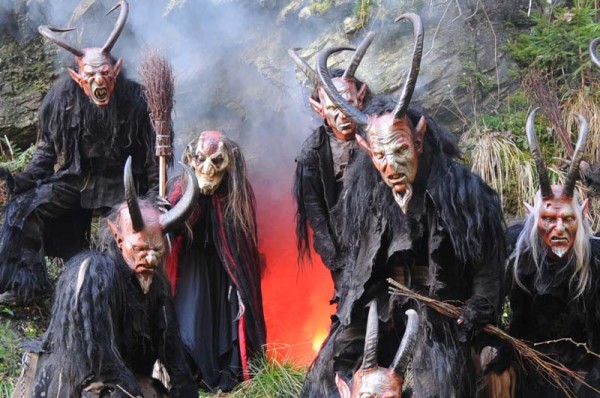 These guys demonstrate a typical technique of Krampus costuming — namely, piling a lot of long hair around the head and shoulder to create a sort of bulky mane that dominates the costume. It’s a good way to use a little hair for big effect. Notice too how almost all the rest of their costumes is just ragged cloth or hide. Tattered cloth blends well, and is often a stand-in for more expensive hair.
These guys demonstrate a typical technique of Krampus costuming — namely, piling a lot of long hair around the head and shoulder to create a sort of bulky mane that dominates the costume. It’s a good way to use a little hair for big effect. Notice too how almost all the rest of their costumes is just ragged cloth or hide. Tattered cloth blends well, and is often a stand-in for more expensive hair.City Fabric is in LA’s downtown fabric district and offers much better range of deep-pile furs than Michael Levine’s or other local vendors. You can bargain him down but don’t expect any free swatches. A good local online-only supplier is Distinctive Fabric. They will send you five free swatches if you set up a free account with them.
Fabric Empire is also in LA (online ordering only). We also like
Mendels in SF for their selection and free samples.

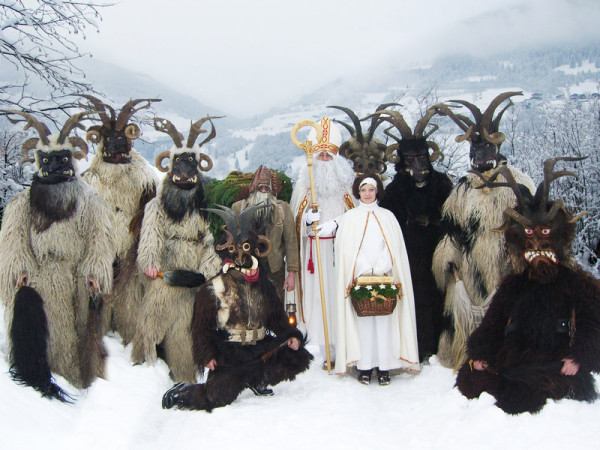
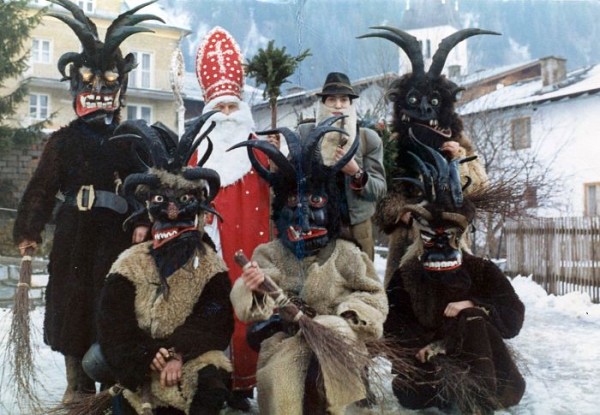
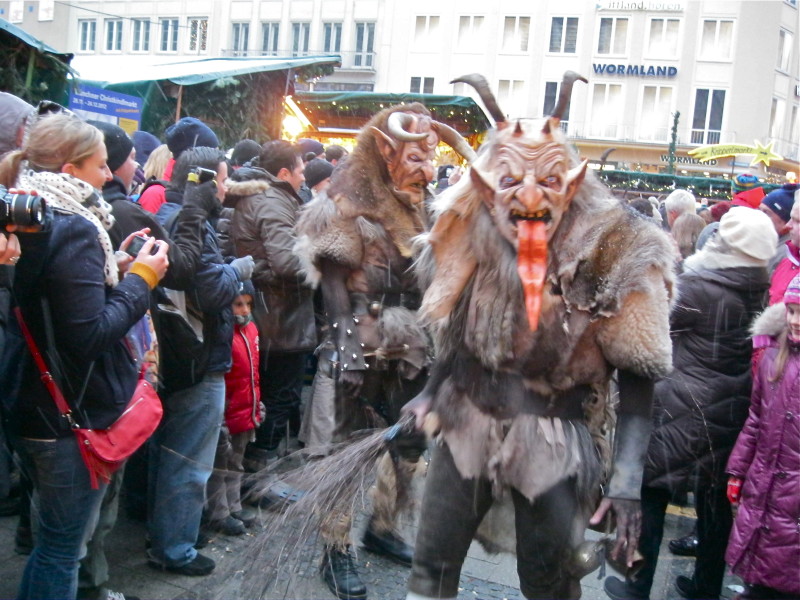
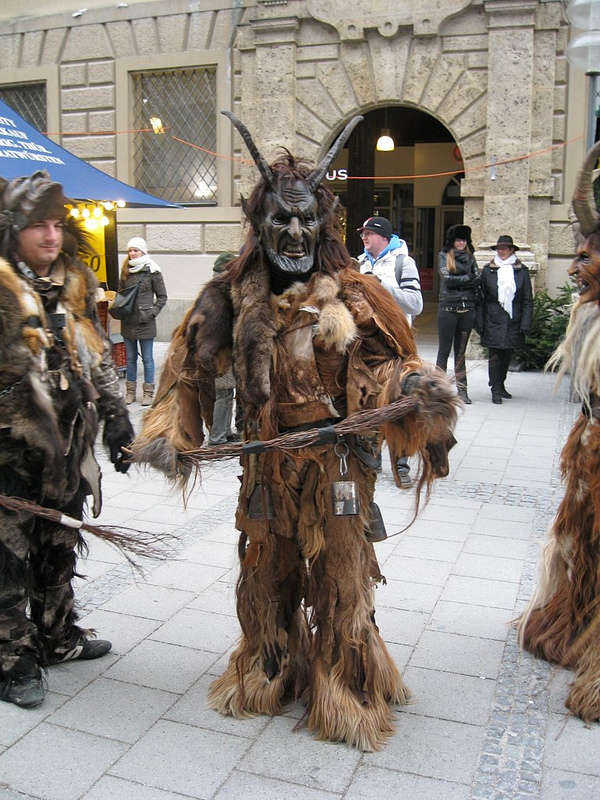
Pingback: A Last Minute Guide to Krampus -